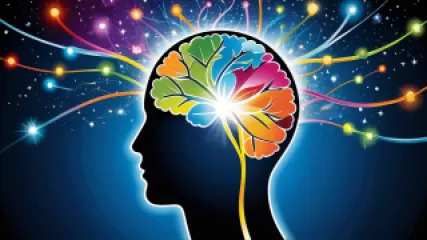Why Positive Thinking is the Key to Optimism and Success
Why Positive Thinking is the Key to Optimism and Success
In a world that often seems filled with negativity, stress, and uncertainty, the power of positive thinking has emerged as a transformative force that can reshape our lives and unlock our full potential. As an avid proponent of this life-changing philosophy, I'm here to share my perspective on why positive thinking is not just a feel-good mantra, but a critical component of achieving optimism, success, and personal fulfillment.
The Transformative Power of Positive Thinking
At the heart of positive thinking lies the belief that our mindset, more than any external circumstances, holds the key to our happiness, success, and overall well-being. When we cultivate a positive, solution-focused outlook, we open ourselves up to a world of possibilities that may have seemed out of reach in the throes of negativity or self-doubt.
The remarkable thing about positive thinking is that it's not just a lofty ideal, but a well-researched phenomenon with tangible benefits. Numerous studies have shown that individuals who adopt a positive, optimistic mindset experience a wide range of physical and psychological advantages, from lower stress levels and improved immune function to greater resilience and increased life satisfaction.
Rewiring the Brain for Optimism
One of the most fascinating aspects of positive thinking is its ability to reshape the neural pathways in our brains. Through a process known as neuroplasticity, our minds have the remarkable capacity to adapt and change in response to our thoughts, behaviors, and experiences.
When we consistently focus on positive, solutions-oriented thinking, we stimulate the production of feel-good neurotransmitters like dopamine and serotonin, which can enhance our mood, boost our motivation, and improve our overall sense of well-being. Over time, this rewiring of the brain can lead to a natural shift towards optimism, helping us to see challenges as opportunities rather than obstacles.
Positive Thinking in Action
To illustrate the power of positive thinking, let's consider a common scenario: facing a difficult task or obstacle. An individual with a negative mindset might immediately focus on all the reasons why they can't succeed, becoming paralyzed by self-doubt and fear of failure. In contrast, someone who embraces positive thinking would approach the challenge with a more constructive outlook, actively seeking solutions and believing in their ability to overcome the hurdle.
This simple shift in perspective can have a profound impact on the outcome. The positive thinker is more likely to persevere, tap into their creativity, and ultimately achieve success, while the negative thinker may become overwhelmed and give up before even trying.
The Ripple Effect of Positivity
But the benefits of positive thinking extend far beyond the individual. When we cultivate a positive mindset, it has a ripple effect that can influence those around us. Positive people tend to be more inspiring, charismatic, and attractive to others, often serving as beacons of hope and inspiration in their communities.
By sharing our optimism and empowering others to adopt a solutions-focused approach, we can contribute to a more positive, collaborative, and supportive social environment. This, in turn, can lead to greater personal and professional success, stronger relationships, and a more fulfilling overall life experience.
Overcoming Obstacles with Positive Thinking
Of course, the journey to positive thinking is not without its challenges. We all face setbacks, disappointments, and difficult circumstances that can test our resolve and threaten to undermine our optimism. However, it is precisely in these moments that the power of positive thinking becomes most crucial.
When faced with adversity, the positive thinker responds not with despair or defeat, but with resilience, creativity, and a steadfast belief in their ability to overcome. They see obstacles as opportunities for growth, and they are willing to persevere, learn from their experiences, and adapt their strategies as needed.
This ability to reframe challenges and maintain a constructive mindset in the face of adversity is a hallmark of successful individuals and high-performing organizations. It is the foundation upon which true optimism and lasting achievement are built.
Cultivating a Positive Mindset
If the transformative power of positive thinking is so profound, you might be wondering: how can I cultivate and maintain a positive mindset in my own life? The good news is that positive thinking is a skill that can be learned and honed over time, with consistent practice and dedication.
Here are some practical tips to help you on your journey towards a more positive, optimistic outlook:
- Practice Gratitude: Make it a daily habit to reflect on the things you're grateful for, no matter how small. This simple practice can help shift your focus from the negative to the positive, fostering a greater sense of appreciation and well-being.
- Reframe Challenges: When faced with a setback or problem, consciously reframe it as an opportunity for growth and learning. Ask yourself, "What can I learn from this experience?" or "How can I turn this challenge into an advantage?"
- Surround Yourself with Positivity: Limit your exposure to negative news, social media, and individuals who tend to be pessimistic or cynical. Instead, seek out uplifting content, inspirational role models, and supportive, positive-minded friends and colleagues.
- Practice Positive Self-Talk: Be mindful of the inner voice in your head and consciously replace negative self-talk with encouraging, empowering statements. Affirm your abilities, celebrate your successes, and remind yourself of your inherent worth.
- Engage in Positive Activities: Make time for hobbies, exercise, and other activities that bring you joy and a sense of fulfillment. Engaging in these positive pursuits can help boost your mood and reinforce your optimistic mindset.
Embracing positive thinking is not a one-time event, but a continuous journey of self-discovery, growth, and personal transformation. By consistently applying these strategies and embracing a solutions-focused approach, you can cultivate a positive mindset that becomes a natural and integral part of your life.
The Ripple Effect of Positivity
As you continue to nurture your positive thinking, it's important to recognize that the impact of your mindset extends far beyond your own personal experience. When we embody optimism and solutions-oriented thinking, we have the power to inspire and uplift those around us, creating a ripple effect that can transform entire communities and organizations.
Consider the example of a team or organization that embraces positive thinking. By fostering an environment of optimism, collaboration, and trust, the members of this group are more likely to approach challenges with a constructive mindset, work together to find innovative solutions, and ultimately achieve greater success.
This positive energy can be contagious, inspiring others to adopt a similar outlook and contributing to a more vibrant, dynamic, and successful workplace or community. In this way, the power of positive thinking can have a multiplier effect, amplifying its impact and creating a positive feedback loop that propels everyone involved towards greater heights.
Positive Thinking and Personal Fulfillment
Ultimately, the true value of positive thinking lies in its ability to help us live more fulfilling, meaningful, and rewarding lives. When we cultivate an optimistic mindset, we're not just chasing success or material gains – we're tapping into a deeper well of purpose, resilience, and self-empowerment.
By focusing on solutions rather than problems, celebrating our strengths and accomplishments, and maintaining a steadfast belief in our ability to overcome challenges, we unlock the doors to personal growth, self-discovery, and a greater sense of overall well-being. We become better equipped to navigate the ups and downs of life, finding joy and meaning in the journey, rather than being defined by the obstacles we face.
In this way, positive thinking is not just a strategy for success, but a way of being – a fundamental shift in our perspective that can transform the very fabric of our lives, relationships, and contributions to the world around us. It is a powerful tool that, when wielded with intention and discipline, can help us unlock our full potential and live the life we've always dreamed of.
Conclusion: Embracing the Transformative Power of Positive Thinking
As we've explored throughout this article, positive thinking is not simply a feel-good mantra or a self-help trend – it is a transformative force that can reshape our lives, our communities, and our world. By cultivating a solutions-focused mindset, we can unlock a deeper well of optimism, resilience, and personal fulfillment, empowering ourselves and those around us to achieve greater success and live more meaningful, rewarding lives.
So, if you're ready to embark on a journey of positive transformation, I encourage you to embrace the power of positive thinking with open arms. Commit to the daily practice of gratitude, reframing challenges, and positive self-talk. Surround yourself with uplifting influences and engage in activities that bring you joy. And be prepared to witness the incredible ripple effect of your newfound optimism as it inspires and uplifts those around you.
Remember, the path to success and fulfillment is paved with positive thinking. So, let's start walking it together, one step at a time, and unlock the boundless potential that lies within us all.






